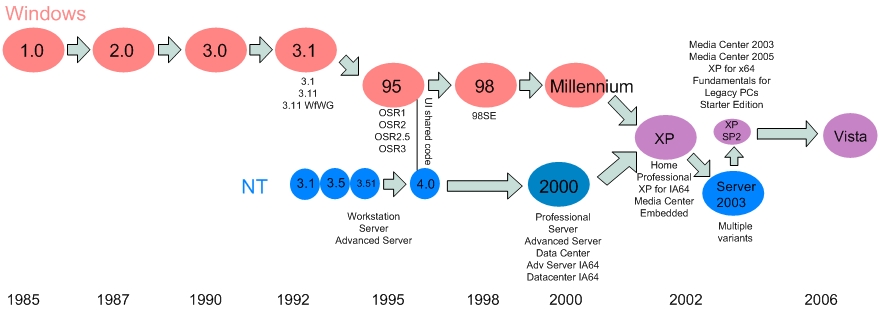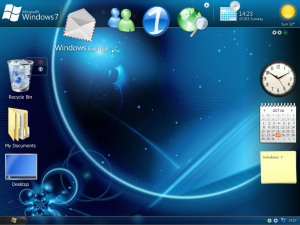Microsoft Windows is a sequence of graphical interface operating systems urbanized and traded by Microsoft. Microsoft presented an operating environment called Windows as an affix to MS-DOS in answer to the increasing concern in graphical client interfaces (GCIs).
Microsoft Windows drew closer to rule the planet’s personal computer market, going beyond Mac OS, which had been presented in 1984. The latest purchaser type of Windows is Windows 7, the main and existing server account is Windows Server 2008 R2. The most current mobile version is Windows Phone 7.5 and latest issue is Windows 8.
The word Windows collectively recounts any or some generations of Microsoft operating system products. These goods are usually classified as follows:

The annals of Windows designated dates back to September 1981, as Chase Bishop, a computer researcher, conceived the first form of an electrical devices apparatus and task “Interface Manager” was started. It was broadcast in November 1983 (after the Apple Lisa, but before the Macintosh) under the title “Windows”, but Windows 1.0 was not issued until November 1985.
The shell of Windows 1.0 was a plan renowned as the MS-DOS Executive. Other provided programs were Calculator, Notepad, Paint, Reversi, Terminal, and Write. Windows 1.0 did not permit overlapping windows. In its place all windows were tiled. Only dialog cartons could emerge over further windows.

Windows 2.0 was issued in October 1987 and boasted some development to the client interface and recollection management. Windows 2.0 permitted submission windows to partly cover each other and furthermore presented more urban keyboard shortcuts. It could also make use of expanded memory. Windows 2.1 was issued in two distinct versions:
Windows/386: employed the 386 virtual 8086 mode to multitask some DOS programs, and is called recollection form to emulate amplified recollection utilizing obtainable extended memory.
Windows/286: (which, regardless of its title, would run on the 8086) still ran in real mode, but might craft use of the high recollection area. The premature versions of Windows were frequently considered as graphical client interfaces, mostly for the reason that they ran onpeakofMS-DOSand utilized it for file system services.
The 16-bit Windows version currently presumed numerous usual functioning schemes, especially having their personal executable document format and supplying their own device drivers (timer, graphics, copier, mouse and sound) for application. Unlike MS-DOS, Windows permitted users to carry out multiple graphical submissions at the matching time, all the way through cooperative multitasking.
Windows applied complicated, segment-based programs, virtual recollection design, which permitted it to run submissions bigger than accessible memory: cipher segment and resources were swapped in and hurled away when recollection became limited, and facts and numbers segments shifted in recollection when a granted submission relinquished processor control.
Windows 3.0 (1990) and Windows 3.1 (1992) advanced, mostly because of virtual memory and loadable effective apparatus drivers that permitted them to divide random apparatus amid multi tasked DOS windows. Also, Windows submissions at the moment run in protected mode, which provide them to get access to some megabytes of recollection and take the responsibility to take part in the programs virtual recollection scheme. For Windows 3.0, Microsoft rewrote critical procedures from C into assembly.
Bio:
I am Fenix Raw from ExamsKey Looking for Exams key exam assistance? Let’s take benefit of Exams key self-paced VCP Certification Preparation Certification training material and pass your IT certification on first attempt with guaranty
Brief Introduction to Windows,





sreedev
Jul 25. 2012
Very informative post.Windows is something we use everyday but we never knew so much about it.
Thanks for posting
TechCrates
Oct 07. 2012
Thanks sreedev!
jane
Jul 26. 2012
Thanks for the information. You have described it nicely.
TechCrates
Oct 07. 2012
Thank you Jane
Ganesan
Jul 27. 2012
Thanks for sharing nice information of Windows from start to till now
TechCrates
Oct 07. 2012
You’re welcome Ganesan
technphone
Jul 30. 2012
Very Informative information on windows. Best sharing post.
ramesh
Aug 01. 2012
An excellent post on windows. although we are use it but never actually think a lot about it!
TechCrates
Oct 07. 2012
Thank you guys for commenting on my blog